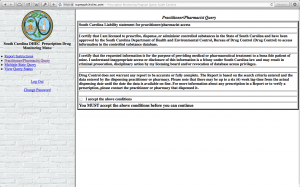Back in March of 2006, then Senator Barack Obama, had this to say about raising the debt ceiling. He nailed it! Wonder what changed?
 This is a link to the certified Senate Congressional Record on March 16, 2006. (S2237-S2238) Mr. Obama’s speech against raising the debt ceiling occurs on page 2 towards the middle of the page.
This is a link to the certified Senate Congressional Record on March 16, 2006. (S2237-S2238) Mr. Obama’s speech against raising the debt ceiling occurs on page 2 towards the middle of the page.
Investors.com: Intelligence Warnings On Benghazi Were Loud And Clear
 By SUSAN KATZ KEATING AND RICHARD MINITER
By SUSAN KATZ KEATING AND RICHARD MINITER
Months before the murder of a U.S. ambassador in Benghazi, American intelligence analysts documented a massive al-Qaida rally a few miles from the ambassador’s residence.
At that rally, terror leaders called for the murder of American diplomats.
Three U.S. intelligence reports, unearthed by the American Media Institute and detailed here for the first time, offer vivid descriptions of the al-Qaida meeting.
Flying the black flag of al-Qaida, some 300 armed men gathered in Benghazi’s Al-Tahrir Square on June 7 and 8, 2012. They brandished machine guns, rocket launchers and a truck mounted with an anti-aircraft cannon.
The two-day meeting, which included outdoor prayers and a parade of armed vehicles, was attended by a baker’s dozen of North African al-Qaida affiliates.
“It was like a team pep rally before the game, only for jihad,” said a U.S. intelligence analyst who monitors North Africa. “Organized and deadly. You saw what followed. People died.”
In the face of these three reports, the State Department continued to deny requests for additional security for the U.S. ambassador in Libya.
At the same time, the State Department issued a travel advisory warning Americans against going to Libya in August 2012.
Obama administration officials have long denied any warning before the Sept. 11, 2012, Benghazi attacks.
On the campaign trail, the president insisted that al-Qaida was “decimated” and “on the run,” while intelligence reports prepared for the president’s advisers told a different story — that al-Qaida’s menace was growing in Libya and elsewhere.
Al-Qaida itself publicly displayed its strength. Al-Qaida posted pictures of the June 2012 Benghazi meeting on its Arabic-language Facebook page and invited the Arabic-language media to cover the event, which many did.
The three U.S. intelligence reports documenting the al-Qaida gathering in Benghazi were circulated in August 2012 and earlier among Defense and State Department officials, as well as America’s 16 intelligence agencies.
The country’s dangers were known to stem from al-Qaida. “In April 2011, I warned Congress to watch out for al-Qaida in Eastern Libya,” said counterterrorism expert Thomas Joscelyn, a senior fellow with the Foundation for Defense of Democracies.
health information database “security”
Several years ago, South Carolina created a database with every controlled prescription filled in the state. Every month, pharmacists like myself upload a file to nanny government with any prescription that you have filled that is controlled. Controlled drugs are in 5 categories. Schedule I is illegal stuff like heroin that we don’t dispense. Schedule II is the strongest pain medications like Oxycontin and morphine. Schedule III is mainly things like hydrocodone (Lortab, Vicodin, & Lorcet). Schedule IV lists anxiety and sleeping aids (Ambien, Xanax, & Ativan). Schedule V drugs are usually things like cough syrups that contain opiates.
The intention of this database was to target prescription drug overuse and illegal street sales.
Like most government actions, the intentions are good, but like most government actions, things like personal privacy and individual liberties get trampled on. The database is supposed to be protected with “probable cause” language. However, the implementation is a simple check box when healthcare providers log on to the database to search patient information. Here is the screen shot from my computer:

I know by clicking this box, the searcher acknowledges the consequences of illegally obtaining information, but this database needs more protection. I’ve always opposed this database but you’ll probably agree that we need to tighten up the access.
Now DHEC is requiring daily uploads and law enforcement has publicized their desire to increase “mining” activity. I’ll be sponsoring a bill that requires a court order for anyone in law enforcement that wants to “mine” this sensitive information.
it’s not pot!
 I’ll be pre-filing a bill this year to differentiate and legalize the crop of industrial hemp. This is a cousin to marijuana that does’t have the THC associated with marijuana. I’m sure I’ll get blamed for trying to legalize pot, so let’s see the rumors fly.
I’ll be pre-filing a bill this year to differentiate and legalize the crop of industrial hemp. This is a cousin to marijuana that does’t have the THC associated with marijuana. I’m sure I’ll get blamed for trying to legalize pot, so let’s see the rumors fly.
Brief History of Industrial Hemp
Hemp was a major crop in Kentucky up until World War II. Shortly thereafter, the nylon industry successfully lobbied to outlaw the crop, linking it to marijuana simply because it is from the same botanical family. However, to be clear, hemp is basically free of the psychoactive properties found in marijuana. The United States is the only industrialized nation that does not allow production of industrial hemp.
Products Manufactured from Industrial Hemp
Fuel
Cattle feed
All textiles
Apparel
Animal bedding
Industrial hemp could be an alternative to fiberglass, carpet and upholstery
Paper (Declaration of Independence and Bill of Rights were written on hemp paper; could replace trees as a major source of paper, which would be good for the environment)
Lotion
Cosmetics
Industrial hemp is a renewable, sustainable, environmentally-conscious product that can be made into diesel fuel and plastics
Auto parts
Biofuels
Potential Economic Benefit to Kentucky
Based on a UK study from more than a decade ago, if Kentucky again became the main source for certified industrial hemp seed in the United States, the economic impact would be more than $1,300,000 in worker earnings.
The total economic impact in Kentucky, assuming one industrial hemp processing facility locating in Kentucky and selling certified seed to other growers, would be more than 300 full-time equivalent jobs and more than $6,700,000 in worker earnings.
If two processing facilities were established in Kentucky, industrial hemp would have an economic impact of roughly 537 fulltime equivalent jobs and more than $12,100,000 in worker earnings.
If one processing facility and one industrial hemp paper-pulp plant were established in Kentucky, industrial hemp would have an economic impact of 771 full-time equivalent jobs and $17,600,000 in worker earnings.
Benefits to Farmers
Studies have shown that hemp could be at least the third most profitable crop in Kentucky.
Kentucky could capture a significant share of the industrial hemp industry.
First, hemp meets the needs of Kentucky’s horse industry by providing affordable animal bedding. Second, Kentucky’s long growing seasons and appropriate soils make industrial hemp profitable. Third, if Kentucky becomes the first state to legalize industrial hemp, it will have a long-term advantage over other states in establishing the industrial hemp industry.
Kentucky tobacco has been under assault for years. Tobacco continues to face greater taxation and regulation. New kinds of industries need to be developed in these agricultural counties.
Another by-product is that when crops are rotated on acreage that has grown industrial hemp in the previous year, crop yield for the new crop can increase 10 to 15 percent..
Hemp v. Marijuana: The Great Misperception
With its psychoactive properties less than one percent, industrial hemp is a plant that is basically free of the key chemical found in marijuana. Therefore, one cannot get high from industrial hemp. It has often been said that you would have to smoke a football field of hemp to get a headache.
In the past, law enforcement has argued that legalizing hemp would make it more difficult to find and eliminate marijuana because the plants look similar. However, statewide hemp production will be a nightmare for marijuana growers. Studies at Indiana University indicate that industrial hemp would cross-pollinate and ruin any marijuana in its vicinity. The marijuana plant becomes seedy and unmarketable and the hemp drastically lowers the THC in the marijuana. Therefore, it would make no sense to grow hemp and marijuana side-by-side. Additionally, hemp and marijuana are distinguishable to the trained eye. Hemp is much taller, has less foliage and is grown close together. Marijuana is a shorter plant with a great deal of foliage and is planted farther apart.
$24.6 m investment in Seneca
 BorgWarner Inc. expanding operations in Oconee County $24.6 million investment expected to create 105 new jobs
BorgWarner Inc. expanding operations in Oconee County $24.6 million investment expected to create 105 new jobs
COLUMBIA, S.C. – South Carolina’s automotive industry continues to grow, with a more than $24.6 million investment announced today by a manufacturer of powertrain components and transfer cases.
BorgWarner Inc., a global leader in powertrain technology, plans to invest $24.6 million to expand its existing manufacturing capabilities in Seneca in Oconee County. The expansion is expected to create approximately 105 new jobs.
“BorgWarner is one of the world’s premier transfer case suppliers for the automotive industry,” said Dr. Stefan Demmerle, president and general manager, BorgWarner TorqTransfer Systems. “We expect that our latest expansion will provide our customers with high-quality, advanced technologies, offer local job opportunities and help sustain the local economy. We are enthusiastic about the future and grateful for the continued support of local and state officials.”
BorgWarner is a supplier to some of the world’s top automotive brands, including VW/Audi, Ford, Toyota, Renault/Nissan, General Motors, Hyundai/Kia, Daimler, Chrysler, Fiat, BMW, Honda, John Deere, PSA and MAN.
“BorgWarner’s expansion is further evidence of the success of the automotive sector in South Carolina,” said Gov. Nikki Haley. “We celebrate the company’s investment of $24 million and the105 jobs which will be created in Seneca.”
Since January 2011, South Carolina has recruited more than $4.1 billion in capital investment and more than 8,300 jobs specific to the automotive sector.
“South Carolina is just right for the automotive industry, which has been accelerating for the past two decades,” said Secretary of Commerce Bobby Hitt. “BorgWarner’s further investment in our Upstate is welcome news, and we are prepared to continue to support their growth right here in South Carolina.”
Based in Auburn Hills, Michigan, the company’s South Carolina facility is located at 15545 Wells Highway in Seneca. The project will be completed in phases over the next few years.
“Oconee County is extremely pleased that BorgWarner has chosen to grow their existing operations here as they have been a great manufacturer in our community for a number of years,” said Joel Thrift, chairman of Oconee County Council. “Seeing this type expansion occur proves that our local economy is ripe for business and our economic development strategies are paying off.”
The company presently employs more than 600 in South Carolina and approximately 20,000 worldwide. Hiring for the new positions has already begun. Those interested in job opportunities with BorgWarner should visit the company’s careers webpage at http://www.borgwarner.com/en/Careers/default.aspx.
The Coordinating Council for Economic Development approved job development credits for the project.
About BorgWarner
Auburn Hills, Michigan-based BorgWarner Inc. (NYSE: BWA) is a technology leader in highly engineered components and systems for powertrain applications worldwide. Operating manufacturing and technical facilities in 56 locations in 19 countries, the company develops products to improve fuel economy, reduce emissions and enhance performance. Customers include VW/Audi, Ford, Toyota, Renault/Nissan, General Motors, Hyundai/Kia, Daimler, Chrysler, Fiat, BMW, Honda, John Deere, PSA, and MAN. For more information, please visit borgwarner.com.
-###-
- « Previous Page
- 1
- …
- 53
- 54
- 55
- 56
- 57
- …
- 400
- Next Page »

